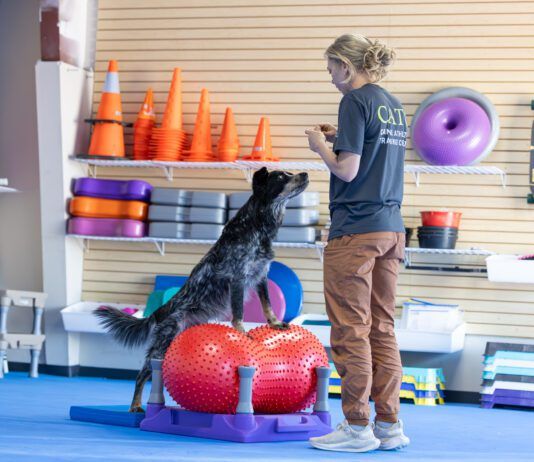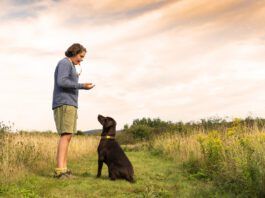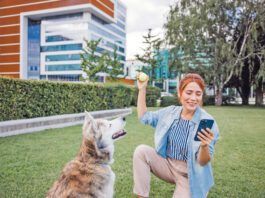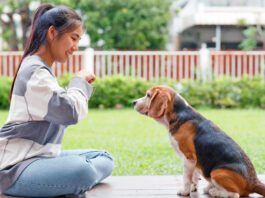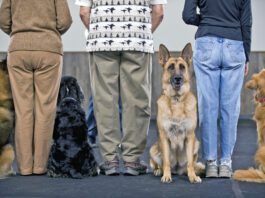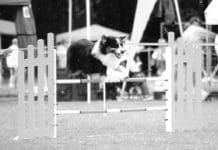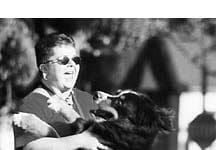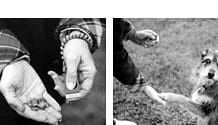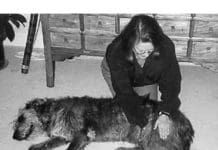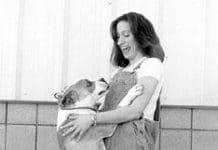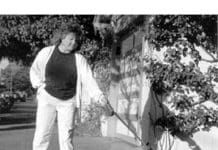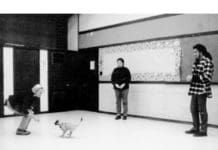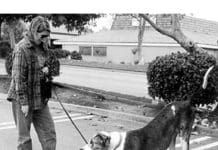Crate Training Made Easy
The crate is a sturdy plastic, fiberglass, wood, metal or wire box just big enough for a dog to stand up, turn around and lie down in comfortably. It can be used with the door open, at your convenience, or with the door closed, when mandatory confinement is called for. When the crate is properly introduced using positive training methods, most dogs love their crates. Canines are den animals and a crate is a modern den a dog's personal portable bedroom that he can retire to when he wants to escape from the trials and tribulations of toddlers and other torments. He can take it with him when he stays at boarding kennels, and when he travels with you and sleeps in hotels and motels.
Portable Dog Crates are Invaluable Travelling Tools
The crate has long been proven to be an invaluable in-home dog behavior management tool. It is also extremely useful on the road. For a long time, the only downside of crates has been that they are big, heavy, and awkward to lug around. A crate big enough for a Labrador Retriever, Rottweiler or (imagine) Great Dane won't even fit in most cars which is one reason why a lot of big-dog owners drive vans and SUVs!
Dog Athlete Massages for Pre- and Post-Activity
Dogs love a good massage. If you don't believe me, ask any dog. Slow rhythmic massage moves can improve circulation, reduce stress, and relieve discomfort from a recent injury or a chronic condition like arthritis. But there is another type of massage that we sometimes overlook. Prior to a competition, an invigorating sports massage can do wonders to get a canine athlete physically pumped and mentally psyched. This is true for any competitive endeavor whether it is lure coursing, agility, obedience, Frisbee, fly-ball, tracking, herding, field trials, or some other activity. After the competition, the dog can definitely benefit from another, more relaxing sports massage.
Rally Obedience Classes for Dogs
I used to show my dogs in competitive obedience. In the beginning, the opportunity to earn obedience titles and show off my dog's training appealed to me greatly. But as I evolved toward positive training methods and a more fulfilling relationship with my dogs, the military precision of the show ring lost its charm. I realized that it made no sense to have a relationship with my canine pals based on warm interaction and communication outside the ring, only to march in cold silence next to my dogs inside the ring. I stopped showing and turned my efforts toward family dog training and activities that were more fun and flexible, like agility and canine freestyle.
Proper Use of Head Halters for Leash Training
Ten years ago, a new dog training tool hit the market. Known generically as the head halter (or head collar), it is a device similar to the halter commonly used on horses. It provides a greatly increased degree of control over the dog who is dedicated to pulling on the collar and leash, without the punishment or pain factors associated with choke chains and prong collars. The head halter has a strap that goes around the dog’s nose, and another that clasps around his neck, just behind the ears. The leash attaches to a ring below the dog’s chin. Just like with halters on horses, bulls and other large animals, it works on the principle that where the nose goes, the body must follow.
Clicker Training and Trick Training Your Dog
one
can shape a new trick."
can shape a new trick."
Tail-Wagging Training
Training, says Massachusetts dog trainer Donna Duford, should be fun, not work. Her seminars are such upbeat, tail-wagging events that the dogs seem to be having a party. Look closer and you’ll see a serious class, with participants taking notes as Duford reviews the laws of learning and defines classical conditioning, operant conditioning, positive and negative reinforcement, positive and negative punishment, continuous and variable reinforcement schedules, and other fundamentals of behavioral training.
Compression Techniques for Muscle Strength
All dogs love a gentle pat on the shoulder or the rump. To them it can be a signal of a job well done or simply an indication of our affection. Touch strengthens the bond between dog and owner and is a basic building block of the canine-human relationship. We have already considered effleurage, the open-hand technique that resembles smooth petting strokes yet does so much for the dog’s circulation, relaxation, and balance. Compression, another open-hand technique, also affords enjoyable physical contact between you and your dog while providing important health benefits to your canine friend.
Training Your Dog Not to Jump Up On You
I have a 1 1/2 year old Labrador Retriever. She is very smart – and very stubborn! My husband and I have been to puppy school, obedience school and we have also worked with a personal trainer. She does the “normal” puppy things – jumping up when I come home from work and when people come to visit, etc. But one of the reasons we went to the trainer was because she seemed to be exhibiting some aggressive tendencies.
Training Foster Dogs to Walk Properly On-Leash
My husband and I acquired two (temporary) canine foundlings last week. Julie is a five-month-old purebred Akita puppy that we rescued from our local shelter, where her cage card identified her as a Shepherd/Husky mix. Her prospects for adoption were dismal, given that the shelter euthanizes 85-90 percent of incoming animals. Our second castaway, Princess, is a three-year-old Beagle mix. My husband and I were driving down a busy highway when we spotted her, hunched in the middle of the road, defecating while cars swerved around her on both sides. Princess was wearing a collar and tag, but her owners had moved, and she ended up staying at our house for several days while we tracked down their new phone number and location.
Why a Reliable Recall Is So Important
Caper was a Spuds McKenzie-style Bull Terrier mix – white with a rakish black eye. She spent the first 18 months of her life running free in the small California coastal community of Bolinas, where resident dog owners eschewed leashes and threw bottles at trucks driven by animal services officers. As happens all too often with dogs who are given too much freedom, the energetic terrier got into trouble – she nipped a small child who tried to play with her on the beach. I adopted Caper upon her release from bite quarantine at the Marin Humane Society more than 20 years ago, and immediately enrolled her in an obedience class.
When Your Well-Trained Dog Turns Aggressive – Act Fast!
I first met Lucy at my local monthly “My Dog Can Do That” competition in January of 1998, at the SPCA in Monterey, California. She was easy to spot – a merle Great Dane with lovely natural ears, who literally towered above the competition. Lucy was attentive, responsive, performed even the most advanced MDCDT behaviors with ease, and consistently placed in the ribbons. It surprised me, then, when a few months later I heard Lucy had started threatening humans, and her aggression was escalating. This was not appropriate behavior for any dog, but particularly disturbing in one of Lucy’s size, with her potential for causing serious harm.


